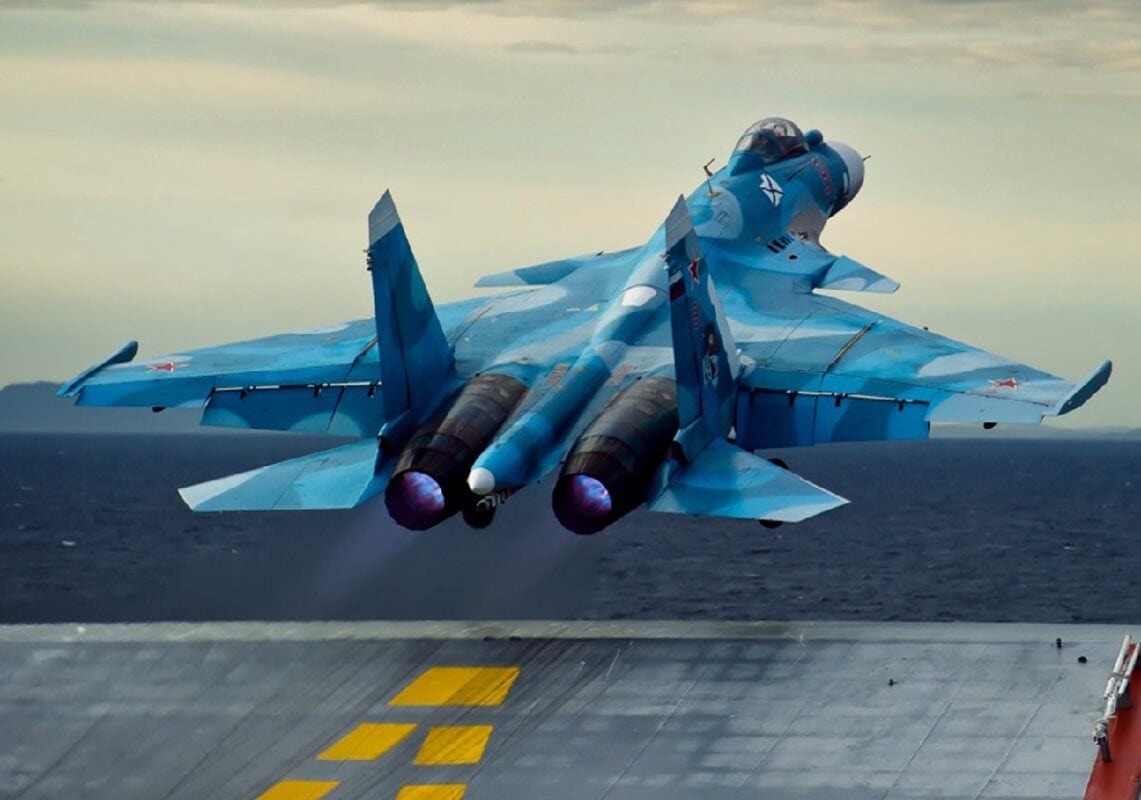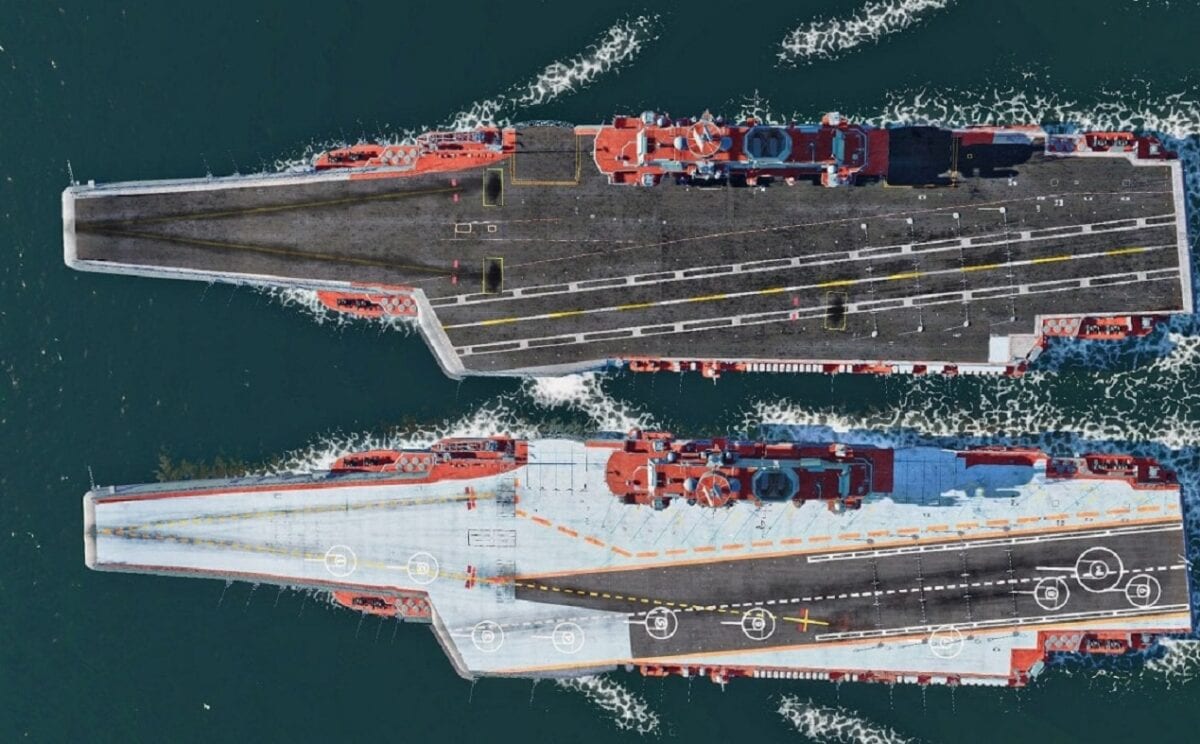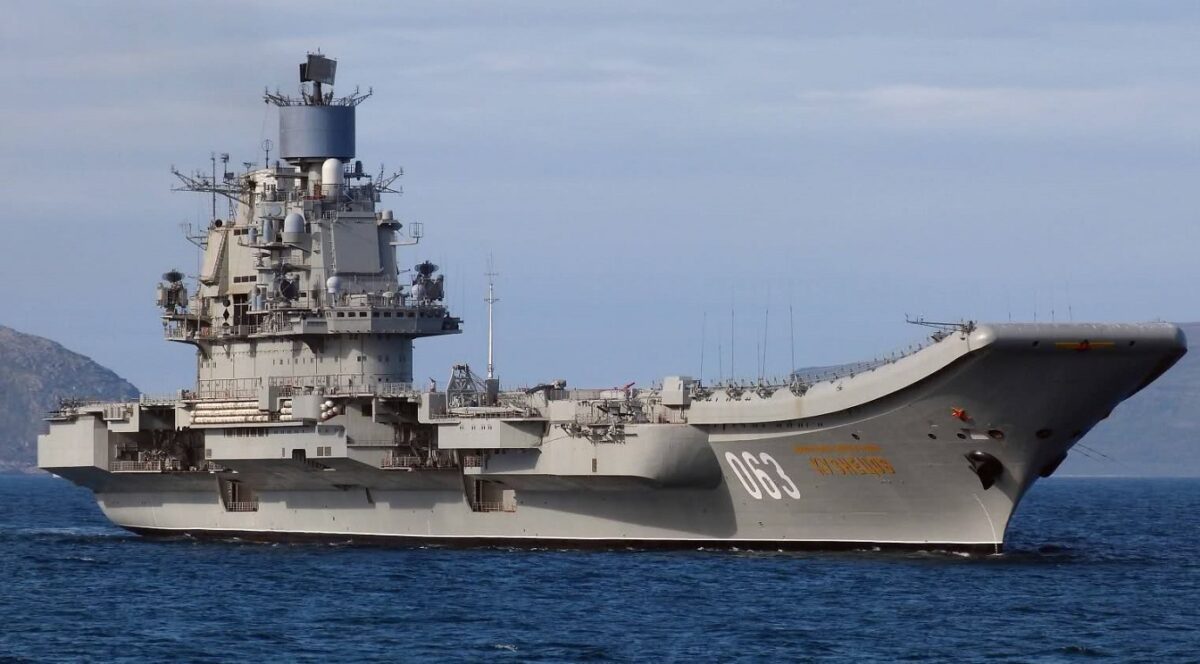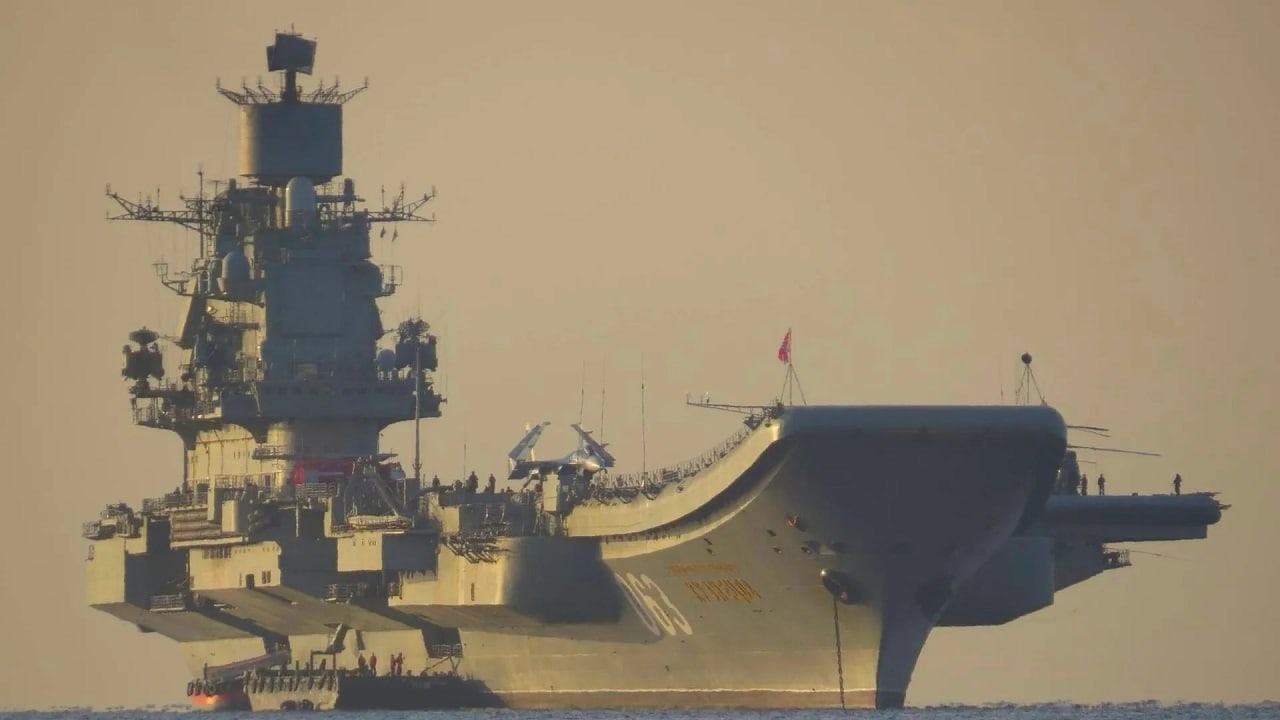Russia’s Only Aircraft Carrier is a Cold War Relic – Aircraft carriers – modern marvels that are essentially floating cities – are highly indicative of a country’s military might and overall wealth. For example, the ultra-wealthy United States operates 11 nuclear-powered, multi-billion-dollar aircraft carriers (with three more under construction.) Ascendant China, currently amidst one of world history’s most ambitious naval expansions, has two operational aircraft carriers with as many as four more on the way (depending on who is reporting the count). The United Kingdom, once rulers of the sea, has a two-boat fleet of aircraft carriers.
And Russia, with its one-dimensional economy and hollowed out military, operates just one aircraft carrier – an aging, smoke-belching relic, currently in drydock awaiting repairs and retrofitting. There is even a good chance that with the war in Ukraine going badly for Moscow – and sanctions hurting badly – the old warship may never sail again.
Russia’s lone aircraft carrier – designated a “heavy aircraft-carrying cruiser” – is the Admiral Kuznetsov. The Soviet Union built the Kuznetsov at the Black Sea Shipyard in modern-day Ukraine. The Kuznetsov was launched in 1985, but did not fully enter service until 1995, four years after the Soviet Union had disbanded. The Kuznetsov was constructed alongside a sister ship, the Varyag. However, when the Soviet Union fell, the Varyag had not yet been completed, and the newly established Ukraine sold the unfinished hull to China. Today, the Varyag is the Liaoning, one of China’s two aircraft carriers.
The Russian aircraft carriers were designed with lower aspirations than their US counterparts. Unlike US carriers, which project airpower abroad, the Kuznetsov was designed to support and defend Russia’s fleet of submarines and surface ships – a more limited role.
The Kuznetsov is a 1,000-foot boat that displaces roughly 60,000 tons using a crew of 1,690 sailors. Relying on a thick, heavy petrochemical fuel called Mazut – rather than nuclear power – the Kuznetsov is limited to just 45 days at sea. That’s about six weeks. To put that in perspective, consider that a US nuclear-power aircraft carrier can stay at sea continuously for 20 years.
The most visually distinct feature of the Kuznetsov is the “ski-jump” launching system. A ski-jump, like the name suggests, is an upward-curving ramp at the bow of the boat. The ski-jump helps aircraft take-off from runways that would otherwise be too short for the aircraft to take-off from. With a ski-jump, an aircraft can generate the lift required for flight at a lower airspeed. So, with a ski-jump, aircraft can take off on short runways, at low speeds. It’s a cheap trick. US carriers instead use a sophisticated catapult system, which slingshots planes to the airspeed necessary to achieve flight-sustaining lift despite the lack of runway space.
Will Russia’s Only Aircraft Carrier Ever Sail Again?
The Kuznetsov has been out of action for quite some time and may have seen its last days of service.
In 2017, after serving off the coast of Syria, the Kuznetsov was brought in for repairs and retrofitting – an attempt to add another quarter-century to the nearly forty-year-old ship’s service life. The retrofit, which was meant to upgrade the ship’s electronics and powerplant, has been full of complications.

Image: Creative Commons.

Image: Creative Commons.
First, in October 2018, the PD-50, Russia’s largest floating dry dock, sank. When the dry dock sank, one of its 70-ton cranes crashed through the Kuznetsov’s flight deck – leaving a 200 square foot hole. Removing the felled crane took over two months. Then, in December 2019, a fire broke out in the Kuznetsov. Two workers were killed while fourteen more were seriously injured from fire and smoke inhalation. The fire inflicted several million dollars worth of damage.
While Russian officials are promising the Kuznetsov will return to service in 2023, observers are becoming skeptical. The ongoing problems with what should have been a simple retrofit, paired with the apparent shortcomings of Russian military equipment and logistics in Ukraine, forces a legitimate question: will the Kuznetsov ever return to service?

Russia’s Only Aircraft Carrier Admiral Kuznetsov. Image Credit: Creative Commons.
Harrison Kass is a Senior Defense Editor at 19FortyFive. An attorney, pilot, guitarist, and minor pro hockey player, he joined the US Air Force as a Pilot Trainee but was medically discharged. Harrison has degrees from Lake Forest College, the University of Oregon School of Law, and New York University’s Graduate School of Arts & Science. He lives in Oregon and regularly listens to Dokken.

